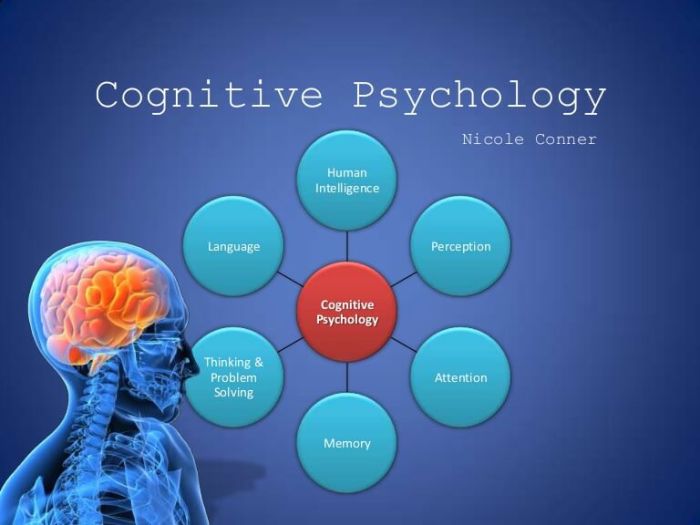11 moving tips for couples wanting start life together – Starting a new chapter as a couple involves more than just packing boxes. This guide offers practical advice on everything from meticulous preparation and efficient packing to creating a shared living space and managing the financial aspects of the move. From the initial planning stages to the final unpacking, we’ll cover essential strategies for a smooth and joyful transition into your new home, ensuring a solid foundation for your future together.
This comprehensive guide provides a roadmap for couples navigating the often-overwhelming process of moving. We’ll explore practical tips, checklists, and strategies for tackling every stage of the move, from preparation and packing to creating a welcoming shared living space and managing finances. Learn how to turn a potentially stressful experience into a positive and exciting journey together.
Moving Preparation
Starting a new life together is exciting, but moving can be overwhelming. Careful planning and organization are key to a smooth transition. This section provides detailed strategies to help couples navigate the moving process effectively.
Pre-Move Tasks
Careful preparation before the move reduces stress and ensures a smoother transition to your new home. Dividing responsibilities clearly will lighten the load and foster a collaborative spirit.
- Inventory and Decluttering: Creating an inventory of belongings helps determine what to keep, donate, or sell. Decluttering before packing saves space and reduces the overall moving costs. One partner could focus on sentimental items, while the other handles electronics and appliances.
- Financial Planning: Develop a comprehensive moving budget that considers transportation, packing supplies, potential storage fees, and any unforeseen expenses. Create a detailed breakdown of costs, tracking receipts, and ensuring both partners understand the financial implications.
- Paperwork Management: Moving involves a significant amount of paperwork, including contracts, leases, and utility transfer forms. Designate one person to manage this process, ensuring all paperwork is organized, and copies are readily available. This person should also be responsible for handling any necessary communications with landlords, utilities, and other relevant parties.
- Pet and Animal Care: Moving with pets or animals requires a thoughtful plan for their well-being. Research pet-friendly moving companies and create a plan for their transportation and accommodations during the move. This could include arrangements with a pet sitter, temporary housing, or transporting them with the moving team. Consider how to mitigate stress for your animals and plan for any potential emergencies.
- Choosing a Moving Company: Selecting a reputable moving company is crucial for a smooth and stress-free relocation. Gather quotes from several moving companies, comparing costs, services offered, and customer reviews. Thorough research will help choose a company that aligns with your needs and budget.
Decluttering and Organizing
Effective decluttering minimizes the volume of items to move and reduces potential stress. A well-organized approach also helps streamline the packing and unpacking process.
- Categorize Items: Sort belongings into categories like keepsakes, clothing, kitchenware, electronics, and books. This categorization makes packing and unpacking more efficient. This will allow you to more easily identify items when unpacking in the new location.
- Donate or Sell Unwanted Items: Donate items in good condition to charities or sell them online or at local consignment shops. This reduces waste and potentially generates extra funds. Having a clear plan for these items before the move will reduce the number of items to pack and transport.
- Packing Supplies: Acquire adequate packing supplies like boxes, tape, markers, bubble wrap, and packing paper. Consider buying reusable containers and packing materials for greater sustainability. Use a spreadsheet or a document to track the types and quantities of packing supplies you need.
Budgeting for Moving Expenses
A detailed budget helps manage moving expenses effectively. Creating a realistic estimate of costs is essential for avoiding financial surprises.
- Transportation Costs: Estimate costs for hiring a moving truck, renting a van, or using a moving company. Factor in fuel costs and potential tolls for a long-distance move. Get multiple quotes to compare prices and services.
- Packing Supplies: Calculate the cost of packing materials, such as boxes, tape, bubble wrap, and markers. Consider bulk discounts or reusable alternatives for cost-effectiveness. Estimate costs based on the quantity of items you will be packing.
- Potential Storage Fees: If you require temporary storage for some belongings, estimate the potential costs. Factor in the duration of storage and any associated fees. This will give you a clearer picture of the total moving expenses and will help to manage finances.
Moving Paperwork Checklist
A well-organized checklist helps manage the paperwork associated with a move.
- Lease Termination: Ensure the lease termination process is followed correctly. Obtain a copy of the lease termination agreement and any necessary documentation. Confirm the termination date and any associated fees.
- Utility Transfers: Initiate utility transfers for electricity, gas, water, and internet services. Ensure the new utilities are set up in your name before moving.
- Change of Address: Update all important documents with your new address. Notify relevant organizations and services, such as banks, credit card companies, and subscriptions.
Safe Storage and Transportation of Valuables
Properly storing and transporting valuable items is crucial to avoid damage or loss.
- Insurance: Consider moving insurance to protect your belongings from damage or loss during transit. This provides financial security in case of unexpected issues. Research different insurance options and compare costs to find the best fit for your needs.
- Specialized Packaging: Use specialized packaging for delicate items. Wrap and cushion fragile items securely in bubble wrap, packing paper, or custom-fit containers. This will help to protect valuable items from damage during the move.
Packing and Unpacking
Moving into a new home together is an exciting but often stressful endeavor. Proper packing and unpacking strategies can significantly reduce the chaos and make the transition smoother, allowing you to focus on the joy of starting your life together. Careful planning and execution are key to minimizing damage and maximizing efficiency during this crucial phase.Packing and unpacking is more than just moving boxes; it’s about preserving your belongings and setting a positive tone for your new life together.
It’s a collaborative effort, and taking the time to develop a systematic approach can prevent unnecessary stress and ensure a smooth transition.
Packing Techniques for Various Items
Different items require different packing methods to prevent damage. Fragile items, like glassware and china, need extra protection. Wrap each piece individually in bubble wrap or packing paper, then place it in a sturdy box. Books and documents should be packed flat, and avoid overfilling boxes. Clothing can be folded neatly and packed in boxes or vacuum-sealed bags to save space.
Electronics should be carefully packaged in their original boxes, or in equivalent protective containers, with packing peanuts or foam cushioning.
Importance of Clear Labeling
Labeling boxes clearly is critical for a smooth unpacking process. Include the contents of each box and the destination room on the label. Using a consistent labeling system (e.g., “Kitchen – Dishes,” “Bedroom – Bedding”) will save you time and effort when unpacking. Color-coding boxes by room can also be helpful for visual organization.
Packing and Unpacking Plan
A well-defined plan ensures efficiency and minimizes stress. Start packing early, and prioritize rooms or areas. Pack items you won’t need immediately last. Unpack essential items first, such as toiletries, bedding, and kitchen supplies. Assign specific tasks to each person, based on individual strengths and capabilities.
Comparison of Packing Materials
Various packing materials offer different levels of protection. Bubble wrap is excellent for fragile items, providing cushioning and preventing breakage. Cardboard boxes are the most common choice for general items. Consider using packing peanuts or foam padding to fill empty spaces within boxes, reducing the risk of items shifting during transport. Choose materials appropriate for the item being packed, and prioritize the protection of your belongings.
Organizing Packing Supplies
Organize packing supplies in advance to avoid last-minute scrambling. Gather all necessary materials (boxes, tape, markers, bubble wrap, etc.) in one central location. Keep packing supplies organized in designated areas, like a spare room or a specific section of the garage, for easy access during the move. Designate a specific area for storage of these supplies.
Efficient Unpacking Tips
Unpacking efficiently minimizes stress. Start with one room at a time and unpack only what you need for the immediate period. Establish a clear system for placing items in their designated locations. Use furniture to support boxes while you unpack. Divide tasks among partners to speed up the process.
This will ensure the entire process is handled systematically.
Establishing a System for Locating Items
Establishing a system for locating items after unpacking reduces frustration. Maintain an inventory of items in each box, using a spreadsheet or a notebook. Taking photos of unpacked items in their designated areas can also help you locate specific items quickly. Use a color-coding system to categorize items and their placement. This will prevent you from looking for something for an extended period.
Shared Living Space

Moving in together is an exciting but also a significant step. Creating a harmonious and comfortable shared living space requires careful planning and open communication. Understanding each other’s needs and preferences, and establishing clear responsibilities, are crucial for a smooth transition and a lasting partnership.Successfully navigating the shared living space involves recognizing that both partners bring their unique habits, expectations, and styles.
So, you’re moving in together? That’s exciting! Before you pack up your life, consider these 11 moving tips for couples. But, before you bring in all the furniture, have you thought about the pros and cons of getting a pet? the pros and cons getting pet might help you decide if a furry friend is right for your new life together.
Ultimately, these 11 tips can help you navigate the practicalities of your new home and ensure a smooth transition.
This shared space is not just a physical location; it’s a reflection of the relationship itself. It’s important to build on this foundation to ensure a comfortable and enjoyable living experience.
Defining Shared Responsibilities
Shared living requires a clear division of responsibilities for maintaining the space. This involves both practical tasks and emotional support. Without clearly defined responsibilities, conflicts can arise over perceived inequities.
- Cleaning and Maintenance: A shared cleaning schedule, outlining who handles which tasks (e.g., dishes, laundry, bathroom cleaning) can prevent resentment and ensure cleanliness. Consider creating a chore chart or using a shared online calendar to visually track responsibilities and avoid misunderstandings.
- Cooking and Groceries: Decide on a system for grocery shopping and meal preparation. This could be weekly meal planning, shared grocery lists, or taking turns planning and preparing meals. If one partner is a more experienced cook, consider assigning meal planning to them, or if one partner works longer hours, consider preparing meals in bulk to reduce the workload.
- Other Household Tasks: Beyond cooking and cleaning, other tasks like paying bills, handling mail, and managing repairs should also be addressed in the shared responsibilities plan. This ensures everyone is contributing their fair share and avoids a feeling of one person being burdened with more tasks.
Establishing a Shared Budget
A shared budget for household expenses is essential for financial harmony and avoids potential conflicts later. A clear and transparent approach to budgeting is crucial.
- Joint Accounts: Consider opening a joint bank account for shared expenses like rent, utilities, and groceries. This makes tracking expenses easier and helps avoid confusion.
- Expense Tracking: Establish a method for tracking all household expenses. This could be a shared spreadsheet, a budgeting app, or a dedicated notebook. Transparency about expenses and income helps build trust and avoid misunderstandings.
- Regular Review: Schedule regular reviews of the budget to ensure that expenses are aligned with the agreed-upon plan and that both partners feel comfortable with the current financial situation. Reviewing spending patterns and making adjustments can prevent potential financial strain.
Resolving Conflicts Regarding Space Usage
Conflicts about space usage are common in shared living situations. Open communication and compromise are key to resolving these issues.
- Open Communication: Regularly discussing space usage preferences and establishing boundaries can prevent conflicts. Be upfront about what you need from the shared space and what you expect from your partner.
- Compromise and Flexibility: Finding compromises and demonstrating flexibility is essential. If one partner has a particular need or preference, be open to finding a solution that works for both. This could involve adjusting a schedule or creating designated areas for certain activities.
- Negotiation: If a conflict arises, negotiation is a crucial skill. Both partners need to approach the discussion with a willingness to find a solution that benefits both of them. Use active listening to understand each other’s perspectives.
Personalizing the Space
Adding personal touches to the shared living space is essential for creating a sense of belonging and comfort.
- Shared Interests: Incorporate shared interests into the design. For example, if both partners enjoy art, consider creating a wall gallery to showcase artwork from both. Displaying pictures of loved ones or places that hold special memories can also help personalize the space.
- Individual Touches: Allow each partner to personalize their designated areas within the shared space. This could be a particular corner of the living room or a section of a shared wardrobe. This can maintain a sense of individuality and comfort.
- Creating Cozy Zones: Designate specific areas or zones for relaxing, working, or entertaining guests. This can help each partner feel more comfortable and at home.
Establishing Shared Routines
Establishing shared routines is important for maintaining a smooth flow and avoiding conflicts over the use of the shared space.
- Consistent Schedules: Establish consistent schedules for household tasks, meal times, and other activities. This helps to prevent misunderstandings about who is responsible for what.
- Designated Areas: Designate areas within the space for specific activities. For example, a designated work area or a space for personal belongings. This creates a sense of organization and respect for each other’s needs.
- Communicating Changes: If a change in routine is needed, communicate it clearly and openly with your partner. This helps to avoid surprises and maintain a harmonious living environment.
Open Communication
Open communication is essential for resolving conflicts and building a strong partnership. Honest and respectful dialogue is crucial for addressing concerns and finding solutions.
- Active Listening: Pay attention to what your partner is saying and try to understand their perspective. Ask clarifying questions to ensure you fully grasp their point of view.
- Expressing Needs: Communicate your needs and expectations clearly and respectfully. Avoid passive-aggressive behaviors and instead use “I” statements to express your feelings.
- Seeking Solutions: Focus on finding solutions together rather than assigning blame. Explore different options and work towards a compromise that satisfies both partners.
Practical Advice
Navigating a move with a partner requires more than just packing boxes; it demands a collaborative spirit and a proactive approach to stress management. This phase demands a strong foundation of communication and a shared understanding of expectations. Anticipating potential challenges and having strategies in place for managing them is crucial for a smooth transition.Successfully managing the moving process hinges on effective stress management techniques, proactive problem-solving, and a commitment to maintaining a positive atmosphere.
By focusing on organization, communication, and support, couples can transform a potentially daunting task into a shared adventure.
Managing Stress and Anxiety
Effective stress management during a move is paramount for maintaining a positive and productive environment. Prioritize tasks, delegate responsibilities fairly, and create realistic timelines. Breaking down large tasks into smaller, manageable steps can significantly reduce feelings of overwhelm. Utilizing relaxation techniques like deep breathing exercises or mindfulness can help manage anxiety and promote a sense of calm.
Open communication about feelings and concerns is vital.
Navigating Challenges, 11 moving tips for couples wanting start life together
Unexpected delays and problems are inevitable parts of any move. Developing a contingency plan for unforeseen issues is crucial. This might involve having extra funds available to cover potential costs associated with delays, having a backup moving company in mind, and having extra time built into the schedule. Keeping lines of communication open with the moving company or service providers will help manage any hiccups efficiently.
For example, a delayed delivery of packing materials could be mitigated by having a backup supply at home.
Staying Organized and Focused
Maintaining organization throughout the moving process is essential for minimizing stress and ensuring a smooth transition. Employing a color-coded system for packing boxes, creating a detailed inventory list, and using labels for each box are simple but effective methods for staying organized. Visual aids, such as floor plans for the new space or a checklist for the packing process, can provide clarity and focus.
Using a shared digital calendar to track deadlines and appointments can ensure everyone stays on top of the schedule.
Maintaining a Positive and Supportive Atmosphere
Maintaining a positive atmosphere is crucial for a successful move. Celebrating small victories, acknowledging each other’s efforts, and practicing empathy can foster a supportive environment. Focusing on shared goals and recognizing the shared journey can create a sense of unity. Humor and lightheartedness can help alleviate stress and create lasting positive memories.
Importance of Communication and Support
Effective communication is the cornerstone of a successful move. Regular check-ins, clear expectations, and open discussions about concerns or anxieties are vital for a supportive atmosphere. Creating a system for sharing updates and progress, such as a shared online document or a dedicated communication channel, can ensure everyone is informed and on the same page. Seeking support from friends or family can also provide a much-needed boost during this transition.
Creating a Smooth and Enjoyable Moving Experience
Planning for the moving day can make the experience much smoother. Ensure a clear understanding of the moving company’s instructions and have a system for loading and unloading the truck. Have a designated area for storing essential items during the move. Packing items that will be used immediately in separate boxes and keeping them easily accessible can make unpacking less stressful.
Allowing time for rest and breaks will help avoid exhaustion and burnout.
Essential Items for Moving Day
A well-organized moving day is essential for a successful move. Essential items include a first-aid kit, snacks, drinks, and a cooler for keeping food fresh. Important documents should be kept readily available and organized in a secure place. Having a list of emergency contacts readily available can also be beneficial.
Storing Items During the Move
During the move, having a dedicated area for essential items is important. These items should be stored in a safe and accessible location. Consider using a designated box or container to keep them together. A good example of a place to store items is a friend’s or family member’s house, or a storage unit. Storing important documents in a secure location is crucial.
Relationship Considerations
![A Couple’s Guide to Moving in Together [Infographic] 11 moving tips for couples wanting start life together](https://maestrousa.com/wp-content/uploads/2025/07/couples-guide-to-moving-in-together-feat-1.png)
Starting a new life together is an exciting but potentially challenging journey. A move, with its inherent stress and disruption, can amplify existing relationship dynamics. Addressing these challenges proactively is crucial for a smooth transition and a stronger bond. Open communication, shared understanding, and a proactive approach to managing potential conflicts will be key to navigating this exciting new chapter.Moving together often brings about unexpected adjustments.
The shared experiences, from packing and unpacking to navigating a new neighborhood, can significantly impact the relationship dynamic. Addressing relationship concerns directly and proactively can alleviate much of the potential strain and build resilience. By focusing on open communication, understanding expectations, and employing strategies for managing stress, couples can not only weather the move but also emerge stronger.
Addressing Relationship Challenges
Moving presents unique challenges to any relationship. Differences in coping mechanisms, anxieties about the unknown, and the sheer amount of work involved can create friction. Identifying and addressing these issues early on is vital for a successful transition. Open dialogue about anxieties and concerns is critical.
Importance of Open Communication
Honest and open communication is paramount during a move. Discuss expectations, fears, and concerns without judgment. Actively listen to each other’s perspectives and validate feelings. For example, if one partner feels overwhelmed by the packing process, acknowledging and validating those feelings, rather than dismissing them, can foster a supportive atmosphere.
Managing Stress and Potential Conflicts
Stress management techniques are essential during this period. Establish routines, prioritize tasks, and allocate time for relaxation and connection. Conflicts are inevitable, but they can be handled constructively. Agree on conflict resolution strategies beforehand. For example, taking a break to cool down before addressing an issue can prevent escalation.
Setting clear boundaries and expectations about the workload and responsibilities will also help.
Maintaining a Healthy Relationship
Maintaining a healthy relationship amidst the chaos of a move requires conscious effort. Schedule dedicated time for each other, even if it’s just for a quick chat or a shared meal. Maintain existing traditions, and create new ones. For instance, dedicate a specific evening each week to simply relax and enjoy each other’s company.
Strengthening the Bond During Transition
Building a stronger bond requires active effort. Share experiences, learn about each other’s routines, and create a sense of shared purpose in the new home. Focus on positive interactions, acknowledge each other’s contributions, and celebrate small wins. For example, creating a “moving successes” board to display positive aspects of the process can reinforce a positive outlook.
Celebrating Milestones and Achievements
Celebrating milestones and achievements, no matter how small, can boost morale and create positive memories. Acknowledge each other’s efforts and successes during the moving process. This can range from celebrating a successful unpacking session to marking the completion of the last load of boxes. Small gestures of appreciation can have a significant impact on the overall experience.
Creating New Memories and Experiences
Creating new memories and experiences in the new home is crucial for a positive transition. Plan activities, explore the neighborhood, and engage in shared hobbies. For instance, visiting local parks, exploring nearby restaurants, or attending community events can build excitement and create shared experiences.
Financial Management
Starting a new life together often involves significant financial adjustments. Moving, establishing a new home, and merging finances requires careful planning and a shared understanding of responsibilities. This section dives into the financial aspects of the move, providing strategies for budgeting, saving, and managing shared funds effectively.Moving is an expensive endeavor. Careful consideration of potential costs and a well-structured budget can mitigate financial stress and ensure a smooth transition into your new life together.
Understanding your financial capabilities and developing a plan for managing shared resources is crucial for a harmonious and prosperous future.
Potential Moving Costs
Moving expenses encompass a wide range of costs, from the obvious to the often-overlooked. These include packing supplies, transportation fees, potential storage costs, and unforeseen expenses.
- Moving Truck Rental: Renting a moving truck is often a significant cost, varying based on the size and duration of rental. Prices can range from a few hundred to several thousand dollars, depending on the distance and volume of goods being transported. Be realistic about your needs; a smaller truck might be sufficient if you are moving a manageable amount of belongings.
- Packing Supplies: Boxes, tape, markers, and bubble wrap can add up quickly. Buying these in bulk or reusing boxes whenever possible can significantly reduce this expense.
- Labor Costs: Hiring professional movers is a significant expense, but it can save time and effort if you have a large or difficult move. Consider whether the cost is justified by the time saved.
- Storage Fees: If you need to store items temporarily before settling into your new home, storage fees can accumulate. Factor this into your budget and explore storage options in advance.
- Real Estate Agent Fees (if applicable): If you are working with a realtor, commissions and fees can be a substantial cost. Always factor these into your overall budget.
- Utility Connections: Setting up utilities like electricity, gas, and water in your new home incurs fees. Research and compare rates beforehand to minimize costs.
- Other Expenses: Unexpected expenses like damage to belongings during the move, replacing broken items, or extra supplies needed may also occur. Build a buffer into your budget for such eventualities.
Budgeting for the Move
Creating a detailed moving budget is essential for managing finances effectively. This involves listing all anticipated expenses and allocating funds accordingly. Consider the various categories of costs discussed in the previous section.
So, you’re starting a new life together? Moving in with your partner is exciting, but can be tricky. My 11 moving tips for couples wanting to start life together cover everything from packing strategies to negotiating shared responsibilities. This transition is also a great time to think about how to make the best business opportunity, like starting a side hustle or planning for a future venture.
For example, if you’re planning a home-based business, your new space might offer unique opportunities. how make the best business opportunity Ultimately, understanding these dynamics will help you plan your move and future success together, ensuring a smooth transition into your new life as a couple.
- Income and Expenses Tracking: Before creating a budget, thoroughly analyze your current income and expenses. This will provide a baseline for planning your move and identifying potential areas for savings.
- Categorizing Expenses: Divide moving expenses into different categories (e.g., transportation, packing, storage, utility connections). This helps track spending and ensures you stay on budget.
- Setting Realistic Goals: Establish realistic savings goals for the move. Don’t overestimate your financial capacity. Break down large goals into smaller, manageable steps.
- Emergency Fund: Include an emergency fund in your budget. This will cover unexpected expenses that may arise during the move. The amount of your emergency fund depends on your financial situation.
Saving Money on Moving Expenses
Exploring cost-effective alternatives can save a considerable amount of money. Careful planning and consideration of various options can greatly reduce the overall financial burden of the move.
- Reusing Packing Materials: Reusing boxes, bubble wrap, and other packing materials from previous moves or seeking them from friends and family can significantly reduce expenses.
- Negotiating Prices: When renting a moving truck or hiring movers, consider negotiating prices and comparing quotes from different providers.
- DIY Packing: Packing yourself can save on labor costs, especially if you have the time and resources to dedicate to it.
- Seeking Assistance: Enlist help from friends or family for packing and moving tasks. This can reduce the need for professional movers or renting a larger truck.
Shared Financial Responsibilities
Managing shared finances in a new home requires open communication and a clear understanding of responsibilities. This is critical for a harmonious and stable relationship.
- Joint Accounts: Consider establishing joint accounts for shared expenses like rent, utilities, and groceries. This streamlines payment and budgeting.
- Individual Accounts: Maintaining individual accounts for personal expenses can provide a sense of financial independence and allow for separate budgeting.
- Shared Budget: A joint budget will clearly Artikel shared financial obligations and goals, ensuring everyone is on the same page.
- Open Communication: Open communication regarding financial decisions is essential. Discussing financial goals and expectations from the outset will help ensure a smooth transition.
Creating a New Budget After the Move
Adjusting to a new home often necessitates adapting your budget. Thoroughly review your expenses in your new location to create a budget that reflects your current financial situation.
- Reviewing Expenses: After settling into your new home, carefully review all expenses to understand the new financial landscape. This includes utilities, groceries, entertainment, and any other relevant expenses.
- Analyzing Spending Habits: Analyze spending habits in the new location to identify potential areas for savings or adjustments. Consider creating a new budget that incorporates these changes.
- Revising Allocation: Adjust allocations in your budget based on your new financial realities. This might include increasing or decreasing spending in certain categories.
- Seeking Professional Advice: If needed, consider seeking professional financial advice to assist in creating a budget that best suits your new situation.
Financial Management Strategies for Couples
Different financial management strategies suit different couples. Understanding the advantages and disadvantages of each is essential.
Moving in together is a big step for any couple, and these 11 moving tips can help you navigate the process smoothly. From packing efficiently to divvying up responsibilities, a well-planned move is crucial. Interestingly, studies like scientists find socially anxious people are highly intelligent highlight the often overlooked intelligence behind introverted individuals. This kind of introspective thinking can translate well into the meticulous planning needed for a successful move, ultimately making it an easier process for couples.
- Traditional Budgeting: Traditional budgeting involves tracking income and expenses and allocating funds to various categories. This method provides a clear picture of financial health.
- Zero-Based Budgeting: Zero-based budgeting allocates every dollar of income to a specific expense or savings category. This method helps ensure accountability and identify potential areas for savings.
- Envelope System: The envelope system involves assigning cash to specific categories. This method promotes awareness of spending and prevents overspending in certain areas.
- Comparison and Adaptation: Compare different strategies and choose one that best suits your individual financial situations and lifestyle. Be flexible and adjust your strategy as needed to maintain financial stability and meet your goals.
Legal Considerations
Navigating the legal landscape of a new shared life is crucial for a smooth transition. Understanding your rights and responsibilities, especially when entering a new home or embarking on a family journey, is paramount. Proper legal groundwork minimizes potential conflicts and ensures both partners feel secure in their shared future.
Reviewing Essential Legal Documents
Before signing on the dotted line or moving into a new place, thoroughly review all relevant legal documents. This includes pre-nuptial agreements (if applicable), and any existing contracts or agreements pertaining to your finances or assets. Understanding the details of these documents is essential for making informed decisions and protecting your interests.
- Lease Agreements/Rental Contracts: Carefully examine the terms of your lease agreement or rental contract. Pay close attention to clauses regarding rent increases, lease termination, pet policies, and maintenance responsibilities. Understanding these terms prevents unforeseen problems down the line.
- Property Deeds (if applicable): If you are purchasing a home, reviewing the property deed is critical. This document details ownership, any liens or encumbrances on the property, and other important legal information.
- Financial Agreements: This includes loan documents, insurance policies, and any other financial instruments relevant to your shared life.
Understanding Lease Agreements or Rental Contracts
Lease agreements or rental contracts dictate your rights and obligations as tenants. Thorough understanding of the document is key to avoiding disputes and ensuring a harmonious living arrangement. The contract spells out specific rules and conditions that must be adhered to. Familiarize yourself with provisions concerning late fees, security deposits, and the procedures for breaking the lease.
Closing on a New Property (if applicable)
The closing process on a new property involves a series of steps. It’s essential to have a clear understanding of the procedures involved to ensure a smooth transaction. This process involves reviewing mortgage documents, paying closing costs, and finalizing the transfer of ownership. Hire a real estate attorney for guidance through the complexities of the process.
Legal Considerations Related to Moving with Children (if applicable)
Moving with children requires careful consideration of their emotional well-being and legal implications. This involves coordinating with schools, updating addresses with relevant authorities, and adhering to child custody agreements or orders. Understanding your rights and obligations in these situations is crucial for maintaining stability for the children.
Transferring Utilities
Transferring utilities is a straightforward process. However, it’s essential to coordinate with utility providers to avoid service disruptions. This involves notifying the previous and new utility providers, arranging for meter readings, and completing any necessary paperwork. Contact the utility companies directly to get a step-by-step guide.
Handling Potential Legal Issues
While thorough preparation minimizes potential issues, unforeseen circumstances can arise. Have a plan in place to address any conflicts or disagreements that may arise. It’s crucial to have a method of resolving issues promptly and fairly. Documentation is vital in case disputes arise.
Consulting with a Legal Professional
Seeking advice from a qualified legal professional is highly recommended. An attorney can provide personalized guidance on the specific legal requirements of your situation, and ensure you are making informed decisions. This professional guidance helps avoid costly mistakes and ensure legal compliance.
End of Discussion: 11 Moving Tips For Couples Wanting Start Life Together
Moving into a new home together is a significant milestone, but it can be made easier with proper planning and effective strategies. By following these 11 moving tips, couples can navigate the complexities of the move, fostering a smooth transition and strengthening their bond. Remember that open communication, shared responsibilities, and a positive mindset are key to creating a harmonious and joyful new chapter in your lives.
So, get ready to embark on this exciting adventure and make your move a memorable experience!







